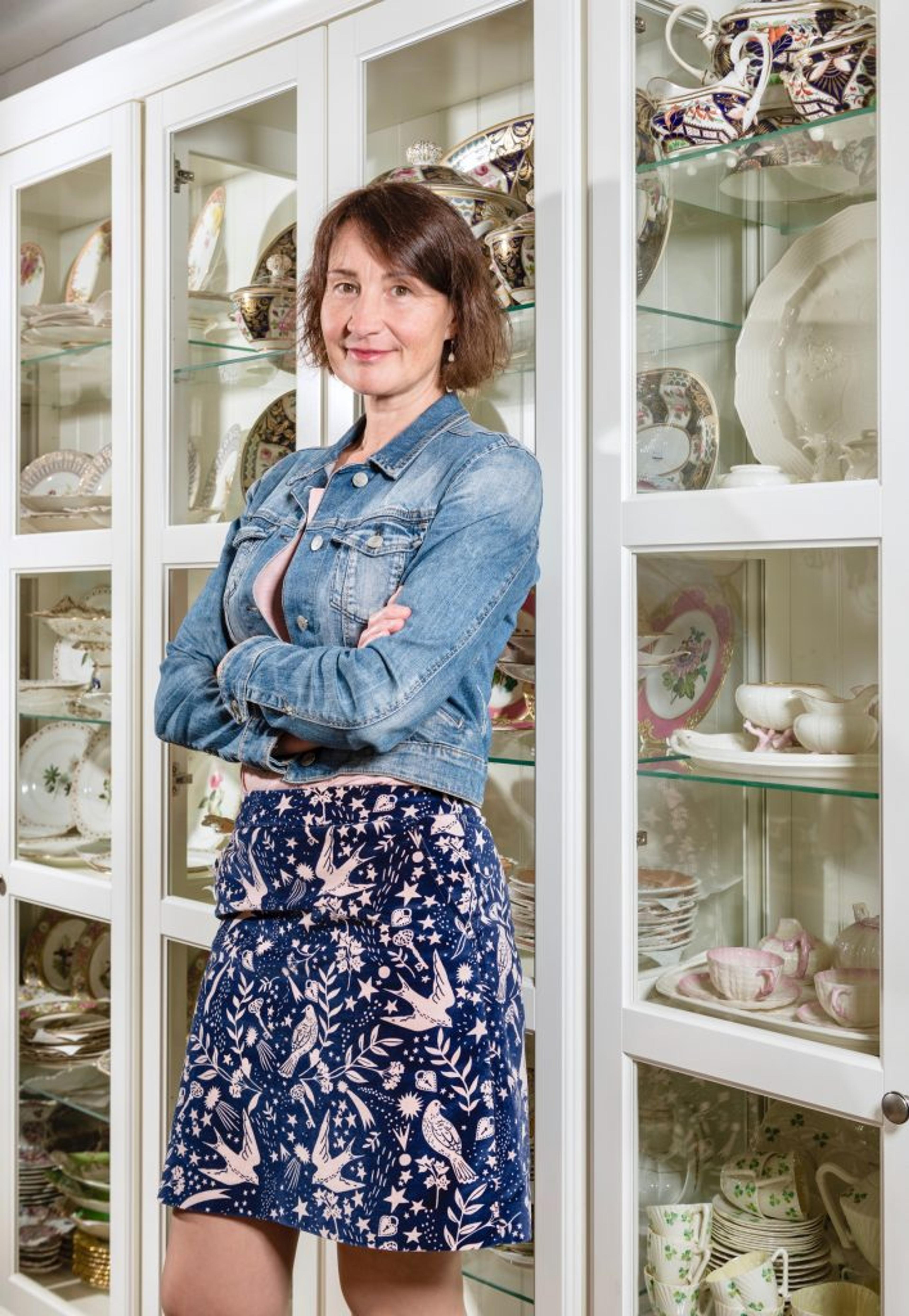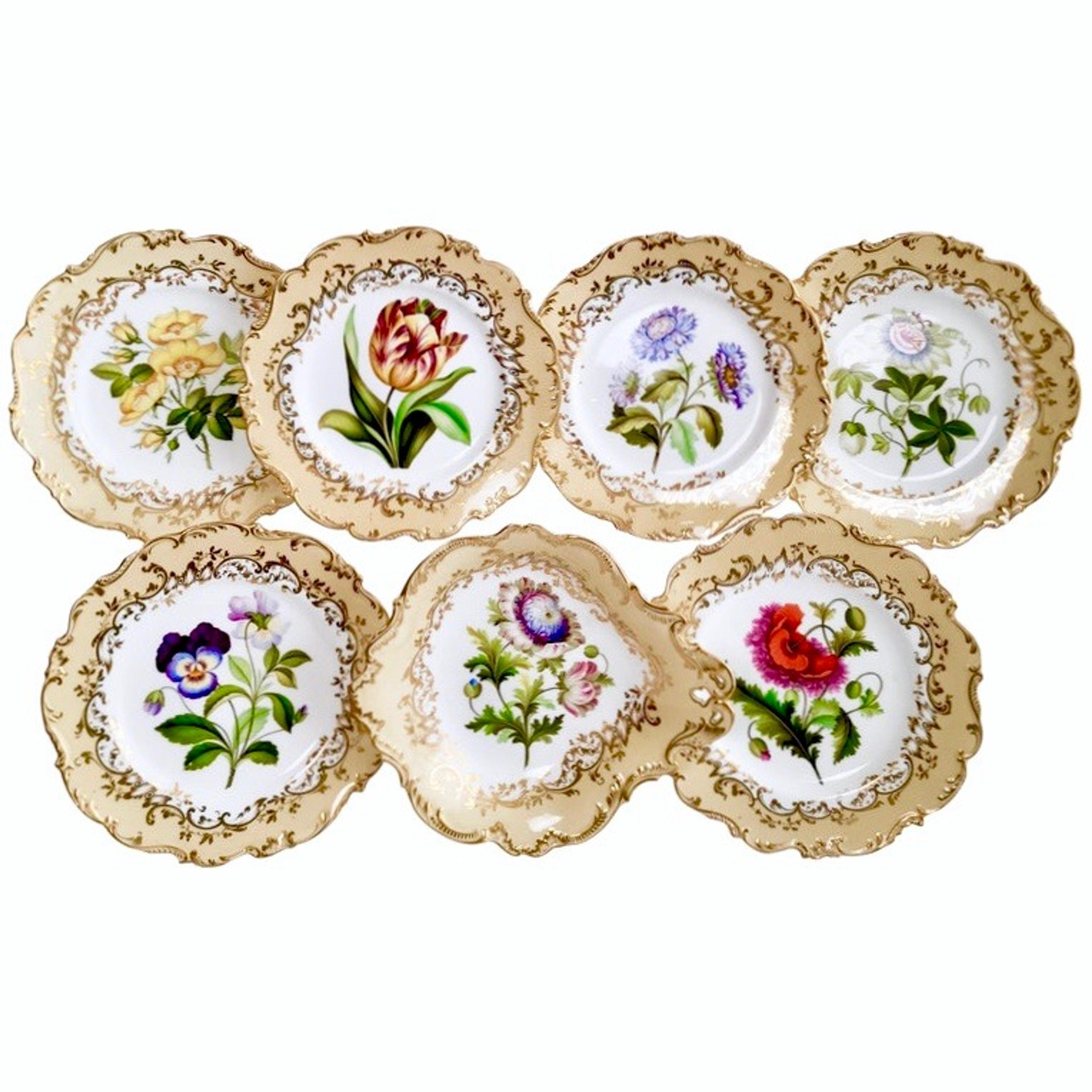Waving goodbye to the misconception that antiques are for old people, Willa Latham’s online business Gentle Rattle of China connects people of all ages, from all over the world, with carefully selected handpicked pieces of antique.
After a spontaneous decision to switch careers Willa started Gentle Rattle of China in 2016 and now shares her insight into why antiques are so special and how to pick the piece that’s right for you (millennials included).
You left a career in Charity Finance to start Gentle Rattle of China – what is your connection to antique porcelain?
My grandmother’s house was full of beautiful porcelain. I loved it as a child and she let me use different cups and plates and told me stories about them. Then I grew up and forgot about it for decades.
I had a satisfying career, but ended up feeling quite burned out, and one morning I woke up and said to my husband: “I am going to sell antique porcelain!” I honestly had no idea where that came from as it took me a few weeks to even remember how much I loved porcelain as a child, but as soon as I started dabbling with it online, it took off and I’ve never looked back. I do a tremendous amount of study on the pieces I find, and many experienced traders are fantastic mentors who share their knowledge generously. So, a childhood passion I had forgotten about has become an exciting journey.
What’s your personal collection like? Have you ever regretted selling a piece that you wish you’d kept for yourself?
I sell most items I buy, but I hold onto all items made by Henry Daniel – a maker in the early 19th Century who made amazing Rococo Revival tableware that is now very rare. I have quite a nice collection now and keep finding things here and there. I also love little figures that were made 260 years ago in Bow, just down the river that my Hackney Wick studio looks out on. They are so innocent and emotionally powerful – it’s early stuff, not very fine but with real humanity. There have been a few pieces that I cried over when I packed them up – but mostly I feel very excited that they find a good home. I come across them dirty and neglected at auctions, so they deserve a new life somewhere in the world where someone is going to love them again! It always makes my day when customers send me pictures of an item in its new home, often from the other side of the world.

Gentle Rattle of China sells exclusively online; what made you go down this route rather than a physical shop?
Initially that choice was born from necessity; property is hard to afford nowadays and many established antique traders struggle with this. I soon realised that I was able to reach a global audience that I would have never reached if I had to look after a shop in Kensington or Portobello Road. I do now have a stock room in Hackney Wick, a thriving hub of creativity in London where I rub shoulders with artists, musicians and designers – I love it there!
I ship to people all over the world on a daily basis, many of them of a young generation who don’t have time to travel anywhere but want to buy unique items that tell them a story. Online I connect with people in ways that would not be possible locally and I love that means of connection!
What tips can you offer to customers to help them pick the right object without being able to see it and touch it in real life?
Study the pictures well – I try to convey as much as I can, and if a dealer offers bad pictures, ask for good ones or move on to someone else.
Always go for what touches you – and still does a day or two later. Sometimes you have to warm to something, but if you go back to look a few times and you feel more attracted, then you know you’ve hit something! Never buy because someone says you should – follow your instinct. Porcelain is very personal; designers put their heart and soul into it, and that’s what you connect to. If a piece speaks to you, it is telling you something, and it will take you on a journey.

How do you mimic the personal feel and great customer service of traditional antiques shops?
There is no mimicking here… customer service is as real online as in person. In fact I feel online is in person. Some of my regular customers have become real friends. As they develop their collection, follow my Instagram and blog, and I develop my knowledge and understanding, our journeys become intertwined.
Sometimes the language or cultural barriers are a challenge, but that’s the same in person – these challenges are to be overcome and the Internet gives so many options to do that. Kindness, a bit of patience, social apps and Google Translate are all really helpful. It all comes down to creating a space to communicate within, whether in person or online.
What do you say to the general conception that antiques are for old people?
Oh, antiques are for everyone! Millennials buy differently from the older generations; they are more eclectic and don’t, well… hoard in the same way! I speak to a lot of people much younger than me who feel a craving for things that are “real” and not marketed to them by consumerism.
I still grew up in a more frugal post-war time, and then we all got under the spell of consumerism. I can see that the millennial generation feels burdened by this seemingly unstoppable force of the high street they were born into. I love the way many younger people are now pushing back on that force and instinctively look for true artistic quality, personal handwork and a sense of historical roots.
If a young person is moving into their first home and looking to start an antique collection, what item(s) do you recommend they start with?
If you have never bought antiques before, I would say: it’s a journey. Buy some items that don’t cost the world, perhaps a bit worn so you get them cheaper, but then you can start to connect to them. As you learn about different items, makers and styles, your taste will develop and you can’t know where it will take you. Often you don’t know why you liked something until you have already moved on – it was taking you somewhere in yourself! Give yourself time to develop your preferences and follow your instinct; each piece is telling you something about yourself and life. And always be practical: are you going to be able to enjoy an item?
Click to enlarge images
What is it about antique porcelain that makes it so covetable?
Antique porcelain is a sophisticated art form made of humble clay and rock. Makers have come up with all sorts of amazing designs, often very personally inspired. English porcelain in particular is very personal; it is much more free and experimental in its design than French or German porcelain because it was always privately sponsored rather than by Royals.
When you hold a piece of porcelain, it tells you something about yourself – what you are drawn to. The people who made it a few hundred years ago connect you to who we all are and where we came from. I write a lot about the context and history of English porcelain on my Instagram and blog and I am always amazed how this speaks to people from all cultures and generations – the stories are human stories and they are universal.
In a world of fast consumerism why is it important to buy antiques? How can buying antiques aim to beat our throw-away society, where items bought from high street retailers are not made to last?
Now that the environment is squarely on the agenda, I think we can see much more clearly that this throw-away attitude is really terrible on so many levels. I am not saying we’re going to eat off antique plates every day, but honouring items that have been made with so much care and creativity, looking after them and passing them on to the next generation is something very special. It connects us with the earth and the people who made these items hundreds of years ago. They were often very poor and lived anonymous lives, and yet we can effortlessly recognise the beauty and humanity they put into the items they made. It balances us to honour that, and I think we need it – I’ve certainly become a much happier person since I reconnected to antiques.
READ MORE: Designer Spotlight: Gentle Rattle of China
Where do you see the future of the antiques industry going?
The antiques industry is currently being disrupted by the Internet, generational changes and globalisation, and that is a chaotic experience for many traders, but I think it will come out renewed and very interesting.
Like everything else, it is going online and this needs new approaches. Antiques are beginning to reach a much bigger audience from all over the world, across generations. Where antiques used to be something for people of a particular age and privileged background, now everyone who is looking for something beautiful with history can get access online, wherever they are and whatever their background. It is all in flux right now, and as traders we need to adapt and learn new ways to reach people… personally I love being able to share my passion with people all over the world. I see a bright and interesting future.
If you want to learn more about antiques then check out Willa’s blog or Instagram.
Visit Gentle Rattle of China to explore the beautiful selection of antique porcelain curated by Willa.
If you want to see pieces in person then her stock room in Hackney Wick is open by appointment.


Comments are closed.